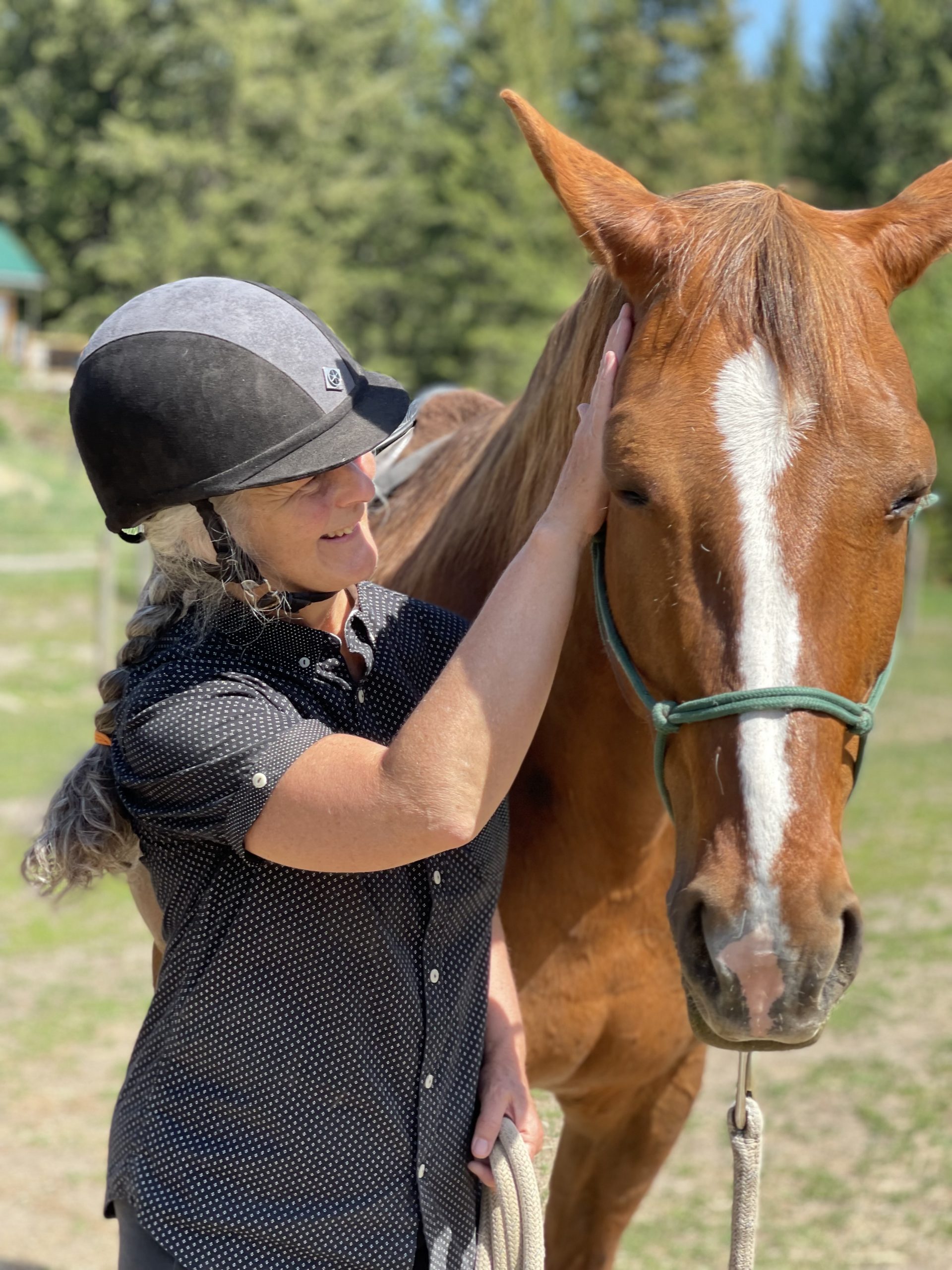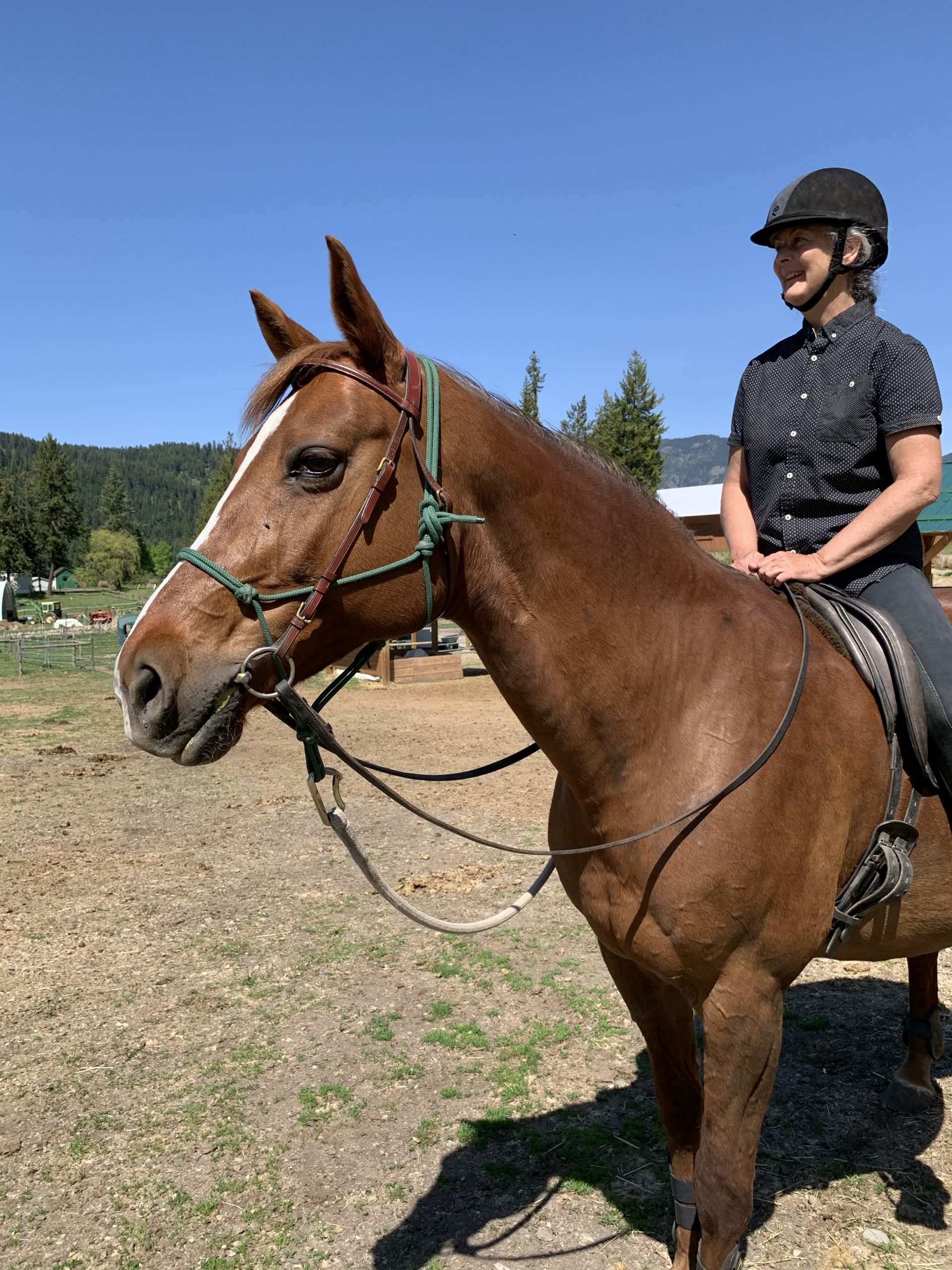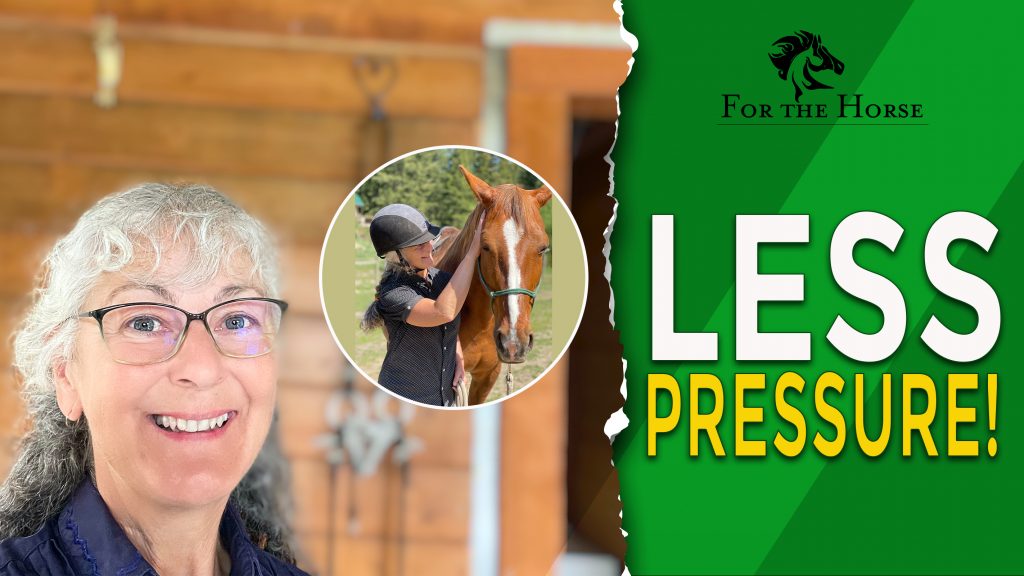If you're not doing this with your horse training, chances are you're not reaching your full potential.
I'm going to share with you what I do in my horse training, that I've learned along the way that has helped me to accomplish so much more with my horses by putting less pressure on myself as a rider, and of course, less pressure on our horses.
It is a daily skill that I developed, and I use daily, that's helped me to manage a herd of 25 horses, and ride to the highest levels of horse training in horsemanship, and dressage.
One of the hardest things to do, for a typical A type person, and rider is to take breaks, or to wait.
I 've worked with a lot of riders and their horses over the years, there's one thing that's really hard for type A people to do, and that is wait...
If they are waiting, they start to get stress building up, anxious behaviour, and then doubt comes in, and then you start to hate yourself or get angry. And then it just spirals and goes on and on and on...
And so what you need to do on a regular basis in our horse training is this ... dwell time.
Dwell time is one way of calling what others call breaks or pauses. And this is where the magic is, in these pauses.
In our Harmony For the Horse Program we help you to work with your horse as a guide to get clear on what your horse needs from you and how to create effective, good movement for life...with Dwell Time!
CLICK HERE to discover more about how we can help you to reach freedom, achievement, oneness and joy that you most seek with your horse.
As a comparison, I want to go back to when I was a dancer.
We were taught when we were performing that the magic is in the silence or the magic is in the pauses, the magic is in the hesitation, in the breath, in the transition before the movement, that's where the magic actually lies. And that's where the connection to your audience happens.
Well, it's the same with our horses.
Ray Hunt has said exactly the same when I studied with him years ago, and went to his clinics, he would talk about the licking and the chewing of the horses. We can take it so much further than that. There are so many different nuances that if we only take the break, or we take the pause, or we take these dwell times, we can...
...observe nuances in expression of the entire body

If we actually take the time to do this, we will start to notice, we will start to settle into ourselves, and our horses will start to settle with us. Things we might notice are what are the eyes doing...not only is it blinking, but is it staring? Is it half open, is it half closed, maybe.
Look at the photo above, of my horse and I. You can look at her eyes in that photograph. You can see what her eyes are doing and how she is actually connecting with me.
Time to focus on energy...
After I studied with Ray Hunt I spent a lot of time on energy work and traveled to many different places to study energy from amazing people. And then as usual, what I did is I took that information, and I brought it to my herd of horses. I have always had a large herd of horses, where I've used to test all these ideas out. Different kinds of horses, all different backgrounds, all different breeds, different ages, different stages in their education. And I've tested everything that I put into our program on this herd of horses, so they've been my wonderful, amazing guinea pigs.
Pause or break with our without contact
Then, with this energy work, it can be done on or off the horse. It doesn't have to be in contact, it can be away from the horse as well.
3 Steps Of Dwell Time
#1. Dwell Time In Horse's Home
Dwell time in the living conditions that your horses have ... in the home of your horse.
I'm very fortunate I have the ability to have my horses in a herd in a social situation. They're all outside, they have shelters, they have all their basic needs met. They have socialization and I observe them every day. Whether it's from my house looking out the window, or whether I'm actually in the paddock with them, I'm with them every day.
And with this skill it's important to...
Observe without judgement
So the labels that sometimes you see around horses, that they're right brained or left brained or introvert or extrovert. I don't like to use those because that categorizes your horse into a slot, into a box and then that does not allow you to actually observe them and what might be happening because you're always seeing it from that perspective.
"Oh my horse is a right brain, he's an introvert". And so you dissect into that, and you miss the times when your horse might be an extrovert. So try to stay away from those kinds of labels if you can, and you observe without judgment.



So you might ask, "What's going on?" How does your horse interact with other horses? If your horse isn't in with other horses, maybe across the fence? How does your horse interact across the fence? How does your horse act around food? How does your horse sleep? How does yourhorse play?
Accept who your horse is
And then the next part is to accept who they are.
So we don't have labels put on them. We can now observe and then accept who your horse is.
And that can be a very insecure horse, maybe a very confident horse, but you're accepting where they are. And from there, that's when you can actually figure out how to solve the problem.
For example, we have a student in our program who submitted for a lesson just recently, and it's done by video. And she submitted the video and right at the very beginning of the video, she was busy.
She was thinking about things that she had to do. She was getting everything in place. And so immediately in our lesson, this is what we addressed, we addressed how to actually ground yourself how to do what I'm talking about here, dwell time, dwell time with her horse.
From the minute you go out and take your horse and put the halter on. This is leading into the next dwell time, which is when we want to ride our horses or do In Hand with our horses. So I helped this rider in our program to see what she is not able to feel at the moment. And what she is not able to think about at the moment. It's a brilliant process.
We help her to see what's going on. We can tell immediately when she has emotions that were getting in her way. Her horse was busy with a bit - lips going everywhere and here and there and everwhere. And it's so frustrating for her when this happens, because the horse is distracted. The use of the bit isn't working, there's not understanding there.
We give her the experience to know what is happening at that point in time.
Emotional recognition ... our emotions lead to thoughts, which lead to our actions. She wasn't even aware that she had emotions that were of total frustration and even anger.



And of course, our horses pick up on that, which does not help the situation of the fussiness with the bit.
And then what we helped her with is her movement's effectiveness ... what she's actually doing.
So we work within this blueprint, we have this framework, and then we allow free and flowing uniqueness happen.
So there's a blueprint, there's processes within that blueprint, but the uniqueness is what we're looking for with you and your horse and what you are experiencing.
So now you've looked at your horse, and you've decided that she's insecure. This is common in horses.
How are you going to help her to feel more secure, so that you're going to be the rider that she may look at and bew thinking, "Oh, this is scary"? And how are you going to turn that around? So that your horse looks at you and says, "I'm going to be with you". "I know that you will help me, I know that you will help me with my insecurities. I know that you will help me to get through this".
All these things you need to sort out where the horse is coming from what is the perspective of the horse and progressively approach with the insecurity.
This is not sacking the horse out or do something major that's going to send them way above their ability, their tolerance level.
You're going to approach slowly, systematically, piece by piece so that your horse can overcome the insecurities or the fear which causes them to rush into hurry with a misunderstanding.



They just want to get along. They just want to be with us. I totally believe that.
So it's our responsibility. It's our job to figure out how we can help that to happen because our horses want that.
We can reform our relationship with horses and make it more of an equal partnership.
We want them to have more say in what we do and everything to be more gentle.
We want to have our horses have a say, so that, that we have a conversation with them.
I like to say it's more like we guide our horses, not that we're leading them, we do need to be in control, which is different from controlling.
But we want to guide them, just as we would guide a five year old child, who's insecure? Or who has a fear about something, we need to guide them. But how do we do that? We need to be secure ourselves.
If we're dealing with insecurities, and fears, and emotional blocks, then we will self sabotage ourselves.
But we need to do this in a way that's going to be effective. And this is what we do in our program. We find out first, what are subconscious blocks? What are the fears of our riders that are holding them back from getting that deep release and relationship from finding out exactly what it is that their horse needs from them and giving it to the horse? Otherwise, it'll always be on the surface, it won't be a deep relationship because you won't be able to get there. CLICK HERE to find out more.
#2. Dwell Time During Activity
This can be perhaps when we are doing In Hand or riding ... our dwell time that we have within an activity. And this is where it can be very hard for us type A riders. Because we want control, we want to be in control of the situation.
A mother of a five year old child needs to be in control, definitely right? Otherwise, it can be chaos. When you're around your horses, you need to be in control, but not controlling. We want our child to be able to have a say, to be able to have a discussion to be able to express feelings, to be able to talk. The same with our horses, we want our horses to be able to talk to us, and we need to have a way to talk back to them. And once you have that, then, as one of our students said, "the world is your oyster".
Here's an example of one of our students in our program. She's homeschooling her kids, she's a body worker, she's a therapist, she's with horses every day. But yet she was finding that her relationship was not satisfying.
She said her horses don't want to really be with her that there wasn't inspiration behind the horses being with her. She felt she couldn't inspire horses. And by the way, it was the same with her children. She felt that she was being more of a dictator than actually inspiring her children.



So as well, a very type A personality. She contacted me and came into our program because she said she was feeling very angry. And then the anger went to sadness. And when it got to sadness, that's when she really couldn't handle it because she was so sad even with everything that she did, and yet her horse didn't want to be with her.
So in the third week of our program, I believe it was, she said, and she's a cranial sacral therapist, she said, "I have been a cranial sacral therapist for 10 years. And I have never felt what I felt when I put my hands on my horse". "I could feel the tissues moving underneath my hands like I've never felt before"!
Not just with our hands, but we work on how to feel with our whole bodies. Because isn't that what riding is all about?
Riding is about feeling with our bodies, with our spines, our seat, our legs, our hands, our arms, the whole unit feeling with our whole bodies, and recognizing emotions. And this is how to use the dwell time when you're riding.
She later told me that she could now start doing things with her horse that she wasn't able to do before.
So when you're riding, the dwell time is a time when you take a break. And it can be in action. Or it can be totally a static position. But you take a break, and you actually use your inner self to feel what's going on.
Breathe, ground yourself, even in the saddle. This is so important for your horse, because that's the time that they assimilate. That's the time that they comprehend. That's the time that what you've just done becomes more of a good effective pattern for them.
Otherwise, your busyness becomes their anxiousness. By being busier, it does not help a horse to not be anxious. You need the spaces, you need the silence you need the calmness and the break.
#3. Dwell Time Close To Your Horse
And the third dwell time is when you're actually close to your horse. So we've talked about when you're an outside observer, observing them in their natural home conditions. We've talked about when you're riding your horse, or doing In Hand or you're lunging dwell time during that time.
This is before or after a ride, while grooming, when you're preparing to ride.
Those times are times when you really want to focus on how your horse starts to reach out to connect with you. It can be very simple.
I used to have a gelding, his name was Merlin, and he would always put his nose on my head. And sometimes it would be a real dirty, mucky nose, but he would always put his nose on my head.
Focus on energy, thoughts, emotions, images, zone and flow
And now if that goes on, unrecognized or not acknowledged, then your horses will just stop giving you that. So when you're close to your horse, this is the time to really dwell and focus on your energy that's coming from your body. Focus on your thoughts, focus on the feelings that you have, images that are coming up to you, and really go into that zone of BEing.
BE with your horse, let the flow happen so you can be with your horse so that then you can start to have the connection and the communion that you're looking for.
It's hard to do on your own and that's why I developed the program that I have, and I have a wonderful team working with me to help riders because this is not taditionally taught very well.
In fact, what is taught is backwards to what you need a good quality rider education.
So I basically flipped it on its head, and developed a program that can help you very clearly, to find out what's blocking you find out where you're stuck, find out what your horse needs. And then we work together to give that to your horse so that you can build the bond and so that you can get the results that you're needing. And not stay stuck. Because time goes by, and it goes by quickly.
If this is something you want to get support with, you can apply to work with us in our program where you can get help to reach your equine goals. We will be happy to chat with you about what's happening with your struggles with your horse, and how you can finally resolve them so that you can have rides that are totally fulfilling and predictable, free and flowing.
CLICK HERE to schedule a call with us!
MORE RESOURCES TO HELP YOU BUILD YOUR DREAM HORSE

